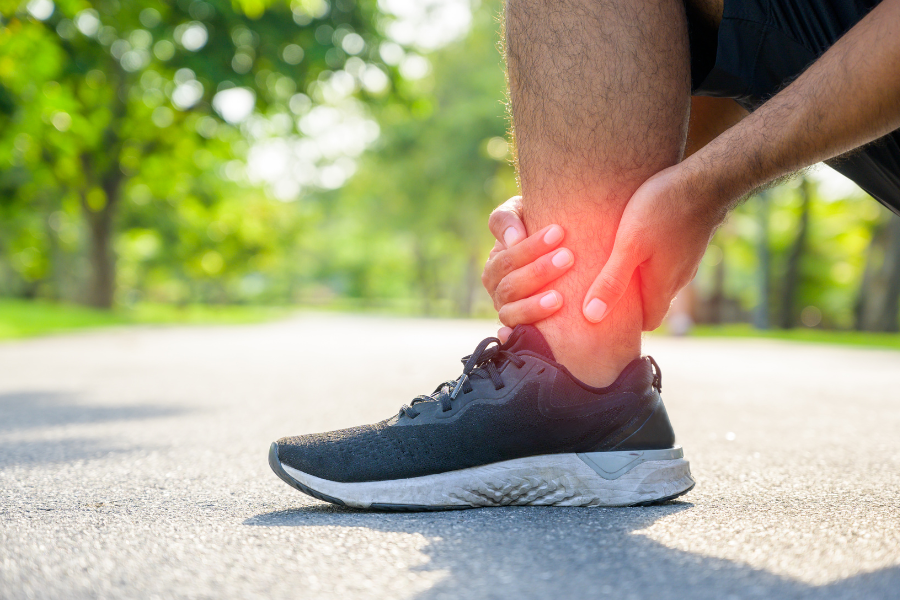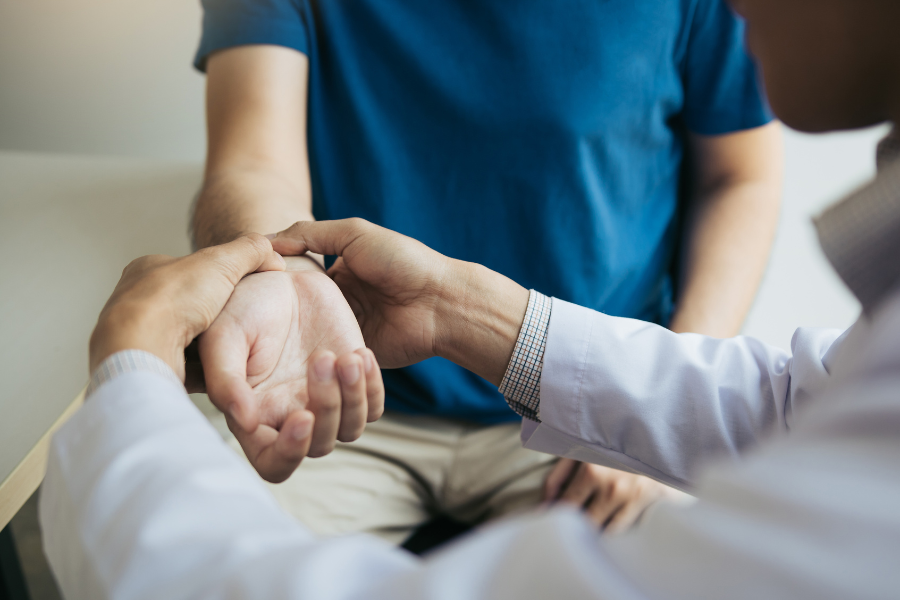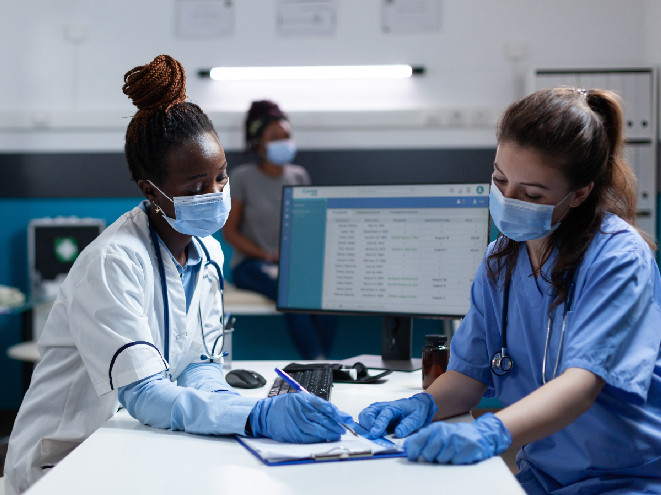A sprain is the stretching or tearing of the fibrous tissue, known as ligaments. Ligaments connect your bones and joints together. Sprains can often keep you off your feet for a bit since the most common location for a sprain is the ankle. Learn more about sprains and what to look out for with CheckPoint Urgent Care.
Sprains
Since mild sprains can be treated at home, it is important to act swiftly to jumpstart the healing process. Immediate treatment should be a combination of rest, ice, compression, and elevation. However, in some severe cases, surgery could be required.
Sprain vs. Fracture vs. Break
A sprain, a fracture, and a break are all types of injuries that affect the bone and/or ligaments. These can happen in the wrist, hand, foot, or even the torso. In order to properly treat your injury, it is important to know the difference between sprains, fractures, and broken bones.
- Sprain — a sprain occurs when the ligament is stretched or torn
- Fracture — the medical term for a complete or partial break in a bone
- Break — used interchangeably with fracture, a complete or partial break in a bone
Sprains involve stretching or tearing of the ligaments, while fractures are breaks involving a crack in the bone, and a break is a full line through the bone.
Symptoms
Depending on the extent and severity of the sprain, your symptoms may vary. You may experience severe pain or little pain at all. Bruising is not uncommon, either. Here are the symptoms to look for:
- Pain
- Swelling
- Bruising/Discoloration
- Stiffness
- Feeling a “popping” sensation
Treatments
When it comes to a sprain, R.I.C.E. is the most effective treatment plan. R.I.C.E. stands for:
- Rest and protect the injured or sore area
- Ice or a cold pack should be used as soon as possible.
- Compression or wrapping the injured area with an elastic bandage
- Elevation (propping up) the injured or sore area
Implementing rest, ice, compression, and elevation as soon as possible after an injury can help aid in fast and proper healing.
Prevention
Incorporating regular stretching and strengthening exercises specific to your sport, fitness routine, or work activities can play a crucial role in reducing the likelihood of sprains.
Stretching helps improve flexibility, allowing your muscles and tendons to move more freely and withstand sudden movements without strain. By incorporating dynamic stretching before physical activity, you can increase blood flow to the muscles and prepare them for the demands of your chosen activity. Additionally, performing strengthening exercises targeted at the muscles supporting the joints involved in your sport or work activities can enhance their stability, reducing the risk of sprains caused by sudden twists or overextension.
Causes Of Sprains
Since sprains are very common, there are many different causes. Some people may experience a sprain by simply stepping off a curb incorrectly. Others may sprain an ankle while playing a sport. The main causes of sprains include:
- Impact — a sudden force of impact on a joint; mainly occurs when falling or twisting
- Improper technique — landing improperly during physical activities
- Fatigue — fatigued muscles can increase the risk of a strain
- Unstable or uneven surfaces — slippery surfaces and rough terrain can disrupt the stability
- Previous sprains — weakened ligaments are more prone to experience another sprain
When To Contact CheckPoint Urgent Care
Sprains can be frustrating because they slow you down, but it’s important to take time in order for them to heal properly, or they could cause permanent injury. If you do not see progress in healing, you should contact CheckPoint Urgent Care, especially if you are experiencing bone tenderness, numbness, or immobility.
Visiting CheckPoint Urgent Care
Visit us at CheckPoint Urgent Care if you’re experiencing excessive pain and swelling. We offer walk-in consultations and X-Rays to help get you back on your feet. Our facility is open seven days a week and in the evenings, ensuring that we are always available when you need urgent care.








